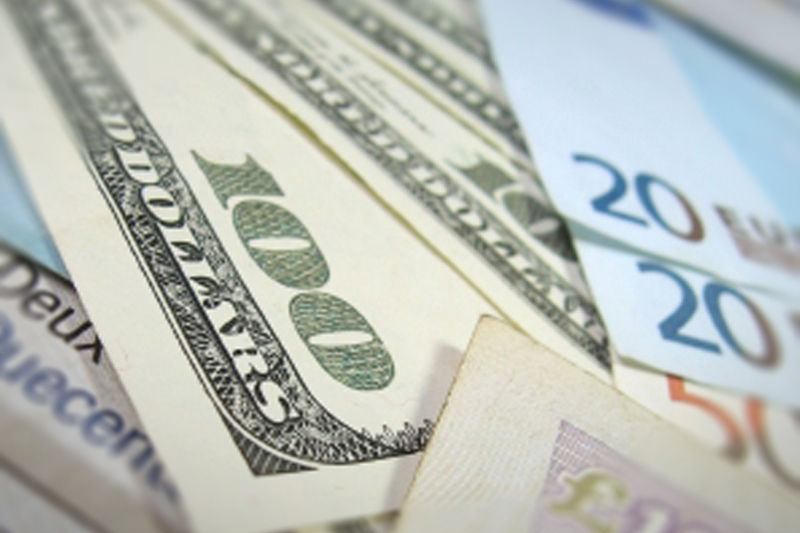Investing.com -- The euro continued its steady rally against the U.S. dollar on Thursday, despite stronger than expected U.S. jobs data but remained relatively unchanged after Iran reached a solution on key parameters of a nuclear deal with Western leaders.
EUR/USD stood at 1.0892 in U.S. afternoon trading, up 1.20% or 0.0130 from Wednesday's close. The pair rose to 1.0898 ahead of the release of a U.S. factory orders' report on Thursday morning, before wavering at 1.08 levels for the remainder of the trading session.
EUR/USD likely received support at 1.05 its low from Mar. 11 and resistance at 1.14 its high from mid-February.
The pair remained constant at 1.0892 following an announcement in Lausanne, Switzerland that Iran and Western powers had reached a deal on the framework of a preliminary Iranian nuclear pact before a final agreement could be reached in late-June.
"This framework would cut off the pathway Iran could take to develop a nuclear weapon," U.S. president Barack Obama said at a news conference outside the White House. "This deal is not based on trust, it is based on unprecedented verification."
It is believed that the severe economic and financial sanctions against the Persian Gulf nation will be lifted on a staggered, step-by-step basis depending on how cooperative it is with inspectors from the International Atomic Energy Agency. Sanctions that have limited the Iranian Banking System will be among the limitations that could be initially removed, NBC News reported.
"The European Union will terminate the implementation of all economic and financial sanction and the U.S. will seize the application of all economic and financial sanctions," EU Vice President Federica Mogherini said at a joint news conference with Iran.
Meanwhile, the U.S. Department of Labor said Thursday that initial claims for state unemployment benefits declined by 20,000 last week to a seasonally-adjusted level of 268,000, the lowest level since January. Economists had expected initial claims to rise to 285,000.
The four-week average, considered a better approximation of labor trends, also dropped by 14,750 to 285,500. In addition, U.S. factory orders for February inched up 0.2%, after six consecutive monthly declines. In a separate report released Thursday, the U.S. trade balance decreased from $42.7 billion in January to $35.4 billion in February, amid lower oil prices and a stronger dollar.
Traders await the release of Friday's U.S. jobs report by the Bureau of Labor Statistics for further guidance on potential currency fluctuations. A panel of economists predicted that the workforce added 248,000 non-farm jobs last month, down slightly from February's increase of 295,000. The labor force has added at least 200,000 jobs per month for every month over the last year. Economists expect that unemployment will remain fairly constant at a level of 5.5%.
On Mar. 6, the euro fell roughly 1.8% to 1.08 after a strong U.S. jobs report coincided with the start of the European Central Bank's €60 billion a month quantitative easing program.
Elsewhere, Reuters reported that Greece told its creditors on Wednesday that it could run out of money on April 9. On that date, Greece owes a €450 million payment to the International Monetary Fund (IMF). Greece could meet its obligation to the IMF or repay government salaries and pensions, but might be unable to do both.
